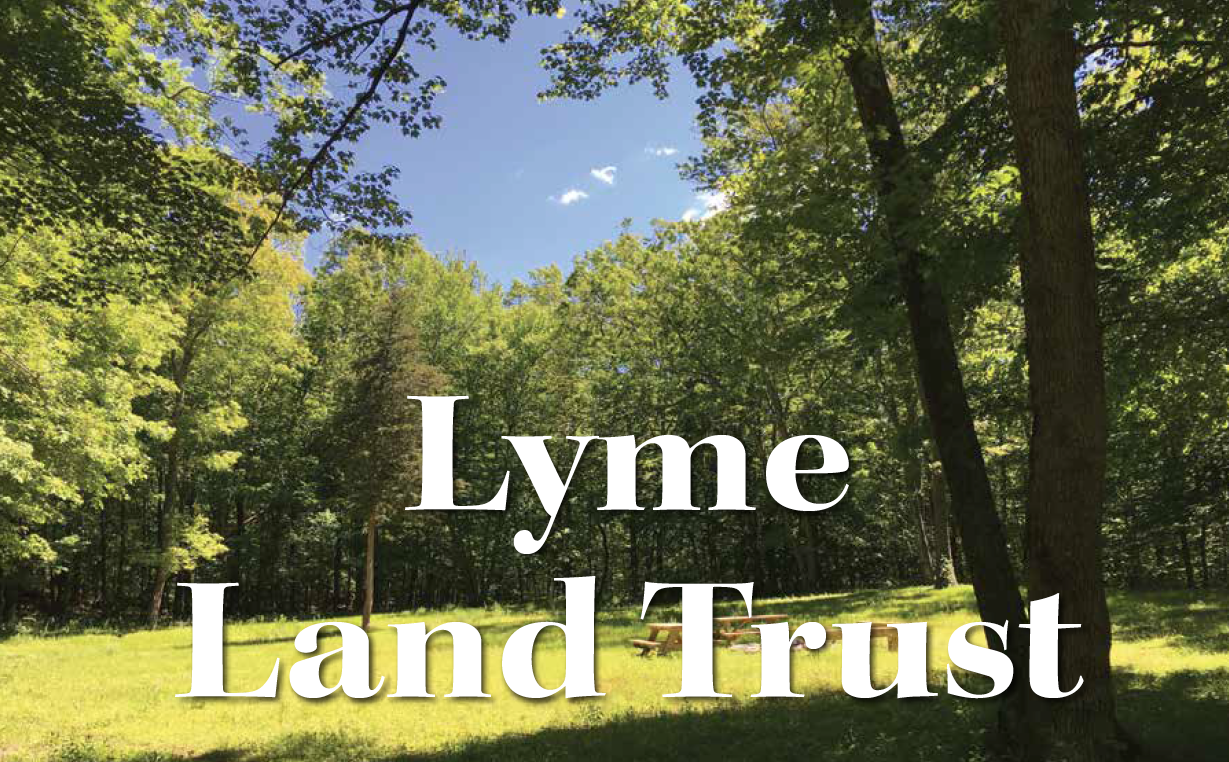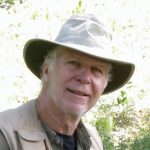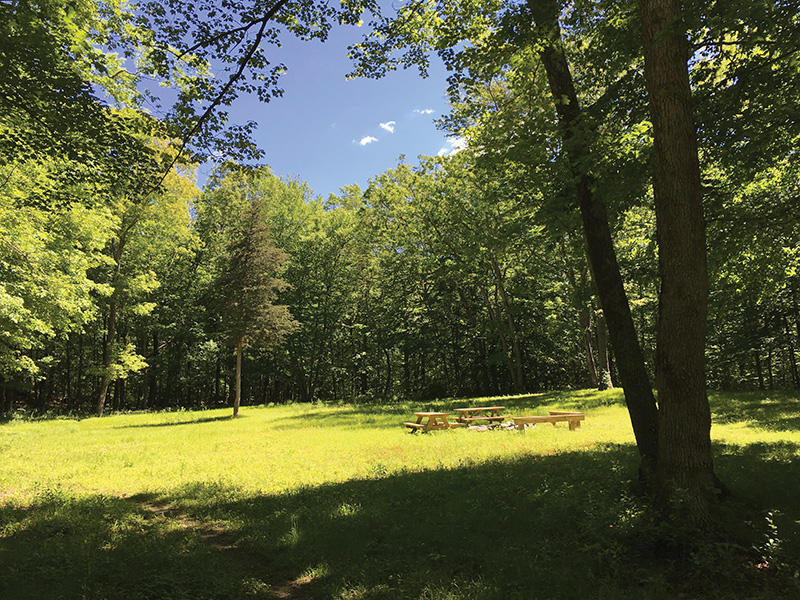
From Passive to Active to Paid Staff to a Building
There are about 100 land trusts in the Connecticut River Watershed, plus four state land trust associations, plus a national association. Thanks largely to these land trusts, which really became a collective force for conservation starting in the 1960s, some 26% of the 7 million acres in the watershed are now protected into perpetuity by easements or trusts. Estuary magazine singles out selected land trusts for honorable mention from time to time (see Estuary issue, Fall 2020, “Land Trusts in the Watershed,” or go to estuarymagazine.com/2020/09/land-trusts-in-the-watershed/). In this issue, we publish the results of a recent interview with two leaders of the Lyme Land Trust in Lyme, CT: John Pritchard, President, and Kristina White, Executive Director.
Estuary: Tell us about the history of the Lyme Land Trust (LLT).
LLT: The LLT was started in 1966. The trust was passive for many years, waiting for people to donate land, money, or to contribute an easement to the trust. Rufus Boehringer changed that. LLT began to purchase property using two sources of funds: first, Connecticut’s Open Space Fund whereby Land trusts could apply for up to 60% of the purchase price; and second, donations from land trust members. If more funds are needed, the LLT holds a fundraiser.
Estuary: How would you characterize where the LLT is today?
LLT: Land under management has increased to 114 properties today, with 43 owned, and the balance, easements. In total, we manage more than 3,000 acres. Over 50% of Lyme is owned by the state, The Nature Conservancy, the Town of Lyme, or the LLT. A large percentage of what remains is “self-protected” in that it is wetlands or rugged terrain. The character of Lyme won’t change over time.
Estuary: What is the relationship between the LLT and the Eightmile River Wild & Scenic Watershed?
LLT: Due to the nature of their set-up, they cannot be their own non-profit. They are a separate organization, but LLT is their fiduciary or fiscal agent.
Estuary: There are about 100 land trusts in the Connecticut River Watershed. How is LLT different?
LLT: Many land trusts are all-volunteer. Our executive director and environmental director (Sue Cope) are full-time employees. Some land trusts are in areas that don’t have a strong conservation ethic, and may be struggling. It is easier for the LLT to develop a real following in our town. Sixty-five of our members give $1,000 or more per year. LLT is also unusual in that we enjoy much synergy with the Town government and the Town’s Open Space Committee. Over 90 percent of participants in our citizen survey believe in open space, conservation, and keeping the character of the town the same. All of the properties in Lyme that have trails are on the LLT website. We share work parties with the Town as much as on our own property.
Estuary: Could you comment on your relationships or interactions with other conservation entities?
LLT: We coordinate with local politicians. Our First Selectman, Steve Mattson, has been helpful, as well as Wendolyn Hill, the Open Space Coordinator for the Town. The Connecticut Land Conservation Council is the voice for Connecticut land trusts in Hartford. Their Executive Director, Amy Blaymore Patterson, is a house-a-fire. The Land Trust Alliance is our national organization. It is a major lobbying force and has a good insurance program where we can save on insurance for all of our properties. The Nature Conservancy goes to Washington once a year to advocate for conservation. Every one of our Connecticut representatives is a supporter of conservation.
Estuary: What are your aspirations for the LLT?
LLT: LLT has a live and consequential “hope” on deck. We were recently given a one-acre plot of land at Hadlyme Corner by Barbara David. Our board subsequently commissioned the design of a “stewardship barn” to provide space for storing equipment as well as a place for volunteers, a few offices, and a meeting room. It will be a game changer in terms of our relations with the community, a showplace for education and leadership in conservation.
Going forward, we believe our stewardship and educational activities will become more important than land acquisition. We will also focus more on managing and protecting our properties. We want to reach beyond our borders to groups that are less privileged, to collaborate with kids who have never been in the woods, and to help others know what hiking opportunities we have.
 John Pritchard: President, Lyme Land Trust. Grew up near Kansas City where he was necessarily outdoors, camping, fishing, and baking potatoes. Went to law school, became a corporate litigator in NYC for 43 years. A resident of Lyme for thirty some years, with conservation as a principal interest. On the Board of the CT Nature Conservancy.
John Pritchard: President, Lyme Land Trust. Grew up near Kansas City where he was necessarily outdoors, camping, fishing, and baking potatoes. Went to law school, became a corporate litigator in NYC for 43 years. A resident of Lyme for thirty some years, with conservation as a principal interest. On the Board of the CT Nature Conservancy. Kristina White: Executive Director, Lyme Land Trust. Kristina grew up in Old Lyme and has made Lyme her home since 2004. She held numerous jobs in the corporate world and most recently was the Administrative Director of Musical Masterworks, a nonprofit chamber music series in Old Lyme. As Executive Director for the past five years, she is responsible for leading the Lyme Land Trust as it relates to the strategic direction and overall management of the organization. She identifies and implements short- and long-term strategic goals.
Kristina White: Executive Director, Lyme Land Trust. Kristina grew up in Old Lyme and has made Lyme her home since 2004. She held numerous jobs in the corporate world and most recently was the Administrative Director of Musical Masterworks, a nonprofit chamber music series in Old Lyme. As Executive Director for the past five years, she is responsible for leading the Lyme Land Trust as it relates to the strategic direction and overall management of the organization. She identifies and implements short- and long-term strategic goals.
